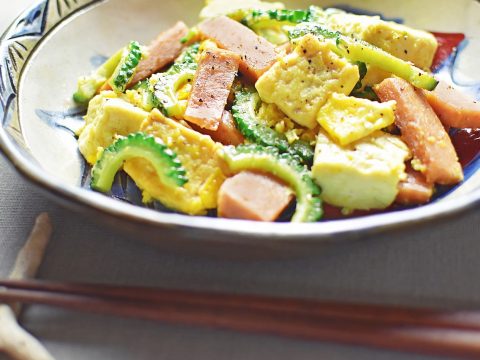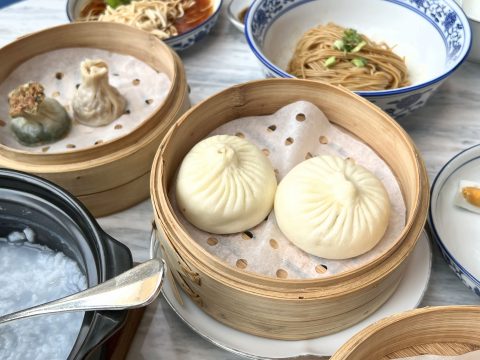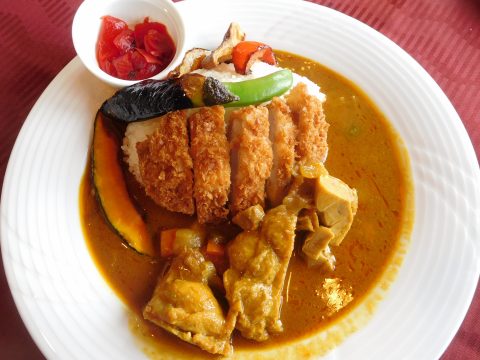豚汁 (Tonjiru)
JAPANESE FOODS
31.01.2023
As the cold winter weather creeps in, don’t we all want to eat something simple and comforting, something that reminds us of the warmth of our homes? I am here to introduce Tonjiru. Tonjiru (or Butajiru) is a broth of stewed vegetables and pork, seasoned with miso. Common ingredients in Tonjiru include pork (usually pork belly or other fatty cuts), burdock, konjac, and earthy root vegetables like carrot and daikon radish, seasoned with dashi and miso. It is the perfect winter dish to make your insides feel warm.

History
Tonjiru is a dish often served at ski resorts and during the winter months in Japan. A special characteristic of this soulful soup is how the fat in the pork creates a layer that rests on the surface of the broth, keeping it warm for a longer time. Its simplicity and taste make this dish so popular with so many people, but theories of the origin of this dish are varied. Let’s take a look at some:

The theory of 薩摩汁 (Satsuma-jiru)
The first theory is that a similar dish from Satsuma Prefecture was the prototype for Tojiru. Foreign influences in the Meiji Period were the trigger of widespread meat consumption in Japan. However, prior to this, the Satsuma region already had a custom of eating meats like pork and chicken accompanied by miso soup. This was known as Satsuma-jiru. As the Meiji government promoted meat consumption to the broader Japanese population as a means of improving physique, variations of Satsuma-jiru were born that combined local vegetables and konjac. Eventually, the umbrella term for this dish was coined: Tonjiru.

The theory of 屯田兵 (Tondenhei)
Another theory is 屯田兵 (Tondenhei). The Tondenhei were a group of soldiers that guarded the borders of Hokkaido during the Meiji period. It is theorised that these soldiers invented Tonjiru to keep warm on long nights camping.
The theory of けんちん汁 (Kenchin-jiru)
Kenchin-jiru is very similar to Tonjiru, however, it misses one key ingredient: the meat! Since Kenchin-jiru is a Buddhist dish, meat is omitted. Even the dashi used in the broth is made using kelp and shiitake mushrooms instead of fish.

Making Tonjiru
Although Tonjiru can be consumed in many ways, ranging from restaurant side dishes to instant cups, it’s such a homely food that surely homemade is the best. The beauty of a simple dish like this is being able to make it yourself, just the way you like it. No two Tonjiru will taste the same. So, if you have made Tonjiru many times, or have never made it before, this is your sign to try making Tonjiru!

Ella Clayton
Ella Clayton is a food writer, traveler, and all-around Japan enthusiast. Studying in Japan for her bachelor’s degree, she has ventured from Kansai and Kanto, and can say definitely: Osaka style Okonomiyaki is the best.
Read previous articles by the writer
Read latest articles
KEYWORDS
- # PICKPICK
- # Resume
- # alcohol
- # Rice
- # Soup
- # winter food
- # Fast Food
- # seafood
- # spicy foods
- # raw food
- # fermented food
- # Transportation
- # MEAT
- # Edo culture
- # suits
- # clothing
- # drink
- # fish
- # seasoning
- # Japanese New Years Foods
- # Toshikoshi soba
- # Osechi Ryori
- # Ozoni
- # Christmas
- # Japanese fusion pasta
- # Wafu Pasta
- # Japanese Hot Pot
- # なべ
- # 鍋
- # Miyazaki
- # Chicken Nanban
- # Karamen
- # Autumn Wagashi
- # Mushi-yokan
- # Imo-yokan
- # Japanese Autumn Fruits
- # Autumn
- # Vending Machine
- # fall
- # dango
- # Chestnut rice
- # saury
- # Mushroom
- # Rice vinegar
- # Japanese condiments
- # 調味料
- # Sake
- # Mirin
- # Soy sauce
- # Japanese Noodles
- # Udon
- # Ramen
- # Yakisoba
- # Soba
- # Japanese Seaweed
- # 海藻
- # かいそう
- # Payslip
- # Training
- # Japanese summer foods
- # 和菓子
- # Wagashi
- # ryokucha
- # 夏
- # 飲み物
- # Ramune
- # ラムネ
- # Pokari Sweat
- # ポカリスエット
- # Calpis
- # カルピス
- # Mugicha
- # ume
- # 梅
- # うめ
- # umeshu
- # job hunting
- # tofu
- # Recruitment in Japan
- # miso
- # Japanese cuisine
- # Yellowtail and bonito
- # Children’s Day
- # Kashiwa Mochi
- # Chimaki
- # fruits
- # Kusamochi
- # Types of Agriculture in Japan
- # bread
- # パン
- # パン屋さん
- # japanese bread
- # shokupan
- # meal blead
- # anko bread
- # 桜
- # さくら
- # cherry blossom
- # visa
- # hanami
- # omotenashi
- # sakura
- # おもてなし
- # Japanese hospitality
- # oshibori
- # wet hand towel
- # hand towel
- # restaurant
- # Commuting in Japan
- # Women-only cars
- # Exit gate
- # japanese train
- # train
- # valentine
- # Japanese sweets
- # 朝食
- # Japanese Breakfast
- # Breakfast
- # Japanese
- # 日本
- # healthy
- # persimmons
- # hoshigaki
- # HR
- # work in Japan
- # jinji ido
- # corporate systems
- # Japanese work culture
- # bento
- # ekiben
- # shinkansen
- # omiyage
- # train station
- # Japanese culture
- # work culture
- # mentaiko
- # umeboshi
- # Japanese snacks
- # potato chips
- # Japanese potato chips
- # Japanese writing
- # seaweed
- # konbu
- # ocean foods
- # shio konbu
- # dashi
- # miso soup
- # food processing
- # pear
- # nashi
- # sweet potato
- # japanese sweet potato
- # stingray
- # satsuma imo
- # food value chain
- # homecooking
- # agriculture
- # Japanese homecooking
- # farming
- # nikujaga
- # shojin ryori
- # meat and potatoes
- # traditional foods
- # comfort food
- # buddhist food
- # manufacturing
- # factory
- # eihire
- # vegetarian
- # food and beverage
- # izakaya
- # yatai
- # japanese festival
- # taiyaki
- # matsuri
- # summer
- # Ikayaki
- # smart agriculture
- # shaved ice
- # kakigori
- # かき氷
- # summer dessert
- # Japan
- # Japanese foods
- # dessert
- # fruit
- # matcha
- # icecream
- # Pikcup
- # Pikc up
- # Pcikup
- # skilled labor visa
- # working visa japan
- # Dineer Table in Japan
- # Japanese manner
- # Japanese food
- # Japanese Table Manner
- # Chopsticks
- # Japanese traffic signs
- # traffic information
- # road rules in Japan
- # chocolate
- # green tea
- # Osaka
- # Work Japan
- # Japanese company
- # ikura
- # sushi
- # nigiri
- # wasabi
- # PCIK
- # PICK UP
- # PICK
- # PICKUP








